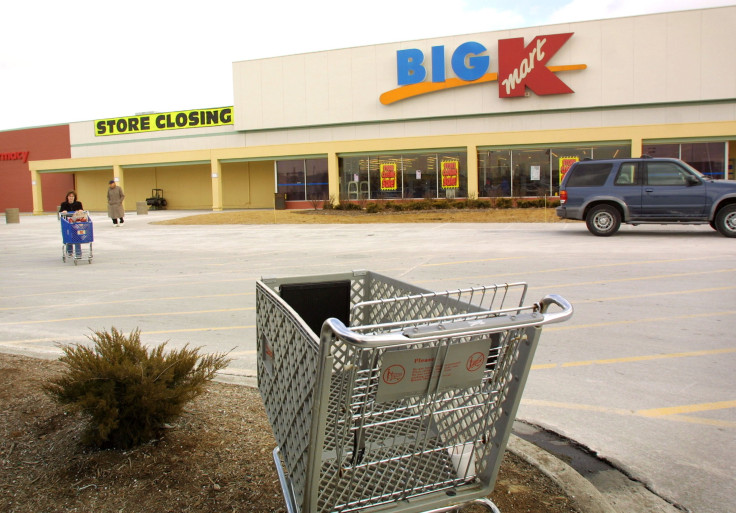Store Closures Coming In 2019, But Don't Call It A Retail Apocalypse

Just because it's cold today does not mean that global warming isn't real. Weather isn't climate and a chilly day (or even an unexpectedly cold season) does not mean much in the big-picture science behind climate change.
The same can be said for the predictions of retail apocalypse you see everywhere. Stores are closing -- and a new report from Coresight forecasts that number to grow year-over-year -- but blaming those closures on the rise in digital sales ignores what's actually happening (and some basic math).
Digital retailers have exposed how poorly many brick-and-mortar chains are run, forcing a number of them to close stores or even go bankrupt. That's not happening because consumers have chosen digital over physical. Instead, shoppers have more choice and they can now more easily opt out of shopping at brick-and-mortar chains that do a bad job.
Take a look at which chains have closed
Retailers that have embraced the current market dynamics like Best Buy (NYSE: BBY), Target, and Walmart have thrived. These chains acknowledged that digital rivals changed the game. Best Buy, which was at one time at risk of being driven out of business by Amazon, changed its business in numerous ways (none of which included significant store closures).
The electronics retailer made its stores into destinations by adding store-within-a-store shops for major brands and focusing on growing its service business. It also adjusted its prices because consumers might pay a little more for an HDMI cable to have it now, but they won't pay two or three times what Amazon charges, even if that means waiting two days for it.
In addition, Best Buy, along with the other successful retailers mentioned above have embraced omnichannel retailing and they use their stores as a major part of fulfillment. A Best Buy customer might buy online and pickup in store or buy online and return in a store. The company might also fulfill a digital order from a store. To make the logistics of all this work has taken significant investment.
Best Buy made that investment and it's thriving while its not-so-dearly departed rival Radio Shack still operated as if the internet did not exist. That's something you could accuse many other "retail apocalypse" victims of doing, including Sears, J.C. Penney, Sports Authority, and so many others.
A look at the numbers
Store closures actually fell in 2018 when 5,524 stores were shuttered compared to the previous year when the lights went out at 8,139, according to Coresight. In 2019, Coresight said 2,187 stores have already been closed, up 23% compared to the same time period last year. That figure was released before reports came out Thursday that Payless ShoeSource is planning to close its 2,300 stores when it files for a second bankruptcy later this month.
Since 2017 e-commerce sales as a percentage of all retail sales have climbed from 9% to 10% in 2018 with a forecast of them growing to 11.1% in 2019 and 13.7% by 2021, according to a Statista chart. That growth does impact brick-and-mortar chains, but it's also coming at a time when the National Retail Federation (NRF) reported that U.S. retail sales overall (including digital and brick-and-mortar) grew by 4.6% in 2018 and are expected to grow between 3.8%-4.4% this year.
That's a lot of numbers to say that while digital sales are growing as a percentage of the whole, the whole is growing as well. Using the NRF projections, overall sales will grow from $3.48 trillion in 2018 to between $3.82 trillion and $3.84 trillion in 2019 (a 9.8% to 10.3% rise). Digital sales will go from $682.8 billion in 2018 to between $751.1 billion and $764.8 billion (a 10% to 12% rise). That means that brick-and-mortar sales will go from roughly $2.79 trillion in 2018 to about $3 trillion in 2019 (using the top of the NRF range), which is a 7.5% rise.
Those numbers don't factor in that brick-and-mortar locations -- at least at well-run chains like Best Buy -- help facilitate digital sales. A need remains for physical retailers. Demand, while it's not growing as fast it is on the digital side, will continue to increase. It's not a retail apocalypse. It's a culling of weak, poorly run retailers which did not embrace the changing needs of consumers.
This article originally appeared in The Motley Fool.
John Mackey, CEO of Whole Foods Market, an Amazon subsidiary, is a member of The Motley Fool's board of directors. Daniel B. Kline has no position in any of the stocks mentioned. The Motley Fool owns shares of and recommends Amazon. The Motley Fool has a disclosure policy.



















